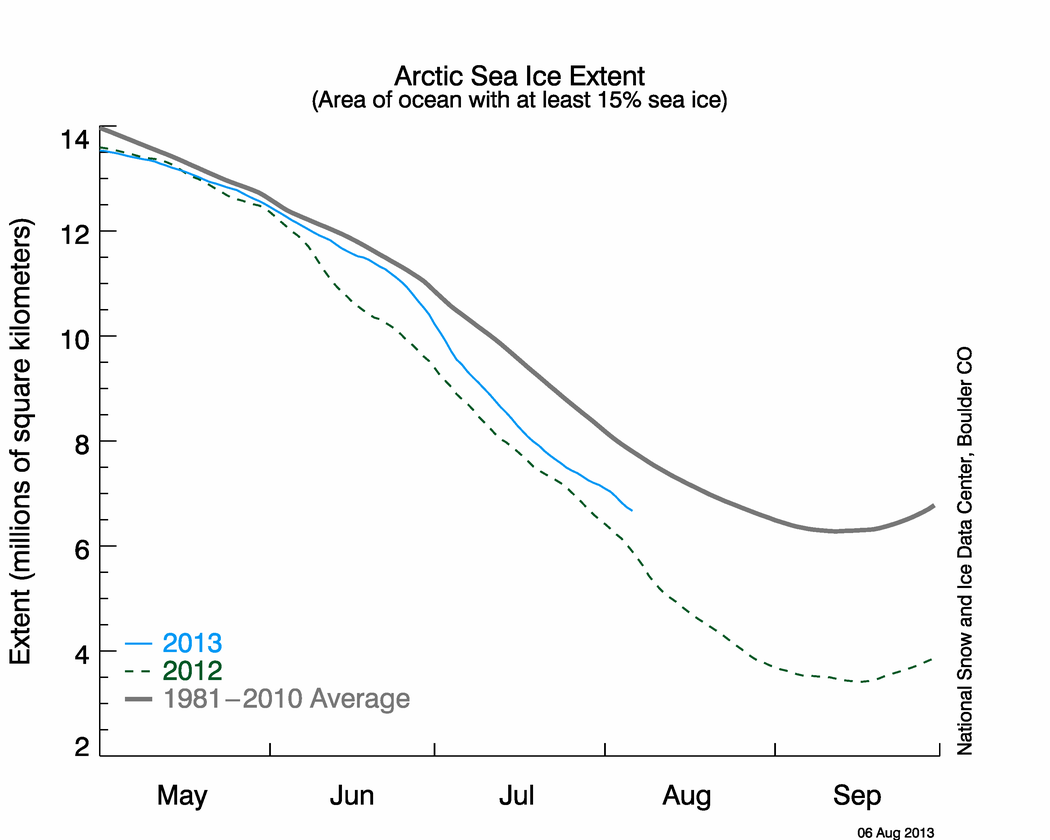
You might already be familiar with the "The accelerating loss of the Arctic sea-ice" problem which the graph above makes fairly clear. As mentioned in an earlier post, the Climate Code Red Publication (pdf) released in February 2008 describes in detail the problem of the loss of the Arctic sea-ice (one of the many serious problems described in the publication). As per the report, the loss in summer of all eight million square kilometres of Arctic sea-ice now seems inevitable, and may occur as early as 2010, a century ahead of the Intergovernmental Panel on Climate Change projections. For details, I highly recommend that you make the effort to read the Climate Code Red publication (pdf). If you are a Global Warming skeptic, it might just manage to convince you that the problem is indeed VERY severe.
A linear increase in heat in the Arctic Ocean will result in a non-linear, and accelerating, loss of sea ice. --Norbert Untersteiner, Professor Emeritus, University of Washington, July 2006
... the primary issue is whether global warming will reach a level such that ice sheets begin to disintegrate in a rapid, non-linear fashion on West Antarctica, Greenland or both. Once well under way, such a collapse might be impossible to stop, because there are multiple positive feedbacks. In that event, a sea level rise of several meters at least would be expected. --James Hansen, Head of NASA Goddard Institute for Space Studies
The water supplies of dozens of major cities around the world are at risk from a previously ignored aspect of global warming. Within the next few decades rising sea levels will pollute underground water reserves with salt… Long before the rising tides flood coastal cities, salt water will invade the porous rocks that hold fresh water… The problem will be compounded by sinking water tables due to low rainfall, also caused by climate change, and rising water usage by the world’s growing and increasingly urbanised population. --Fred Pearce, English author and journalist specializing in Global Environment issues